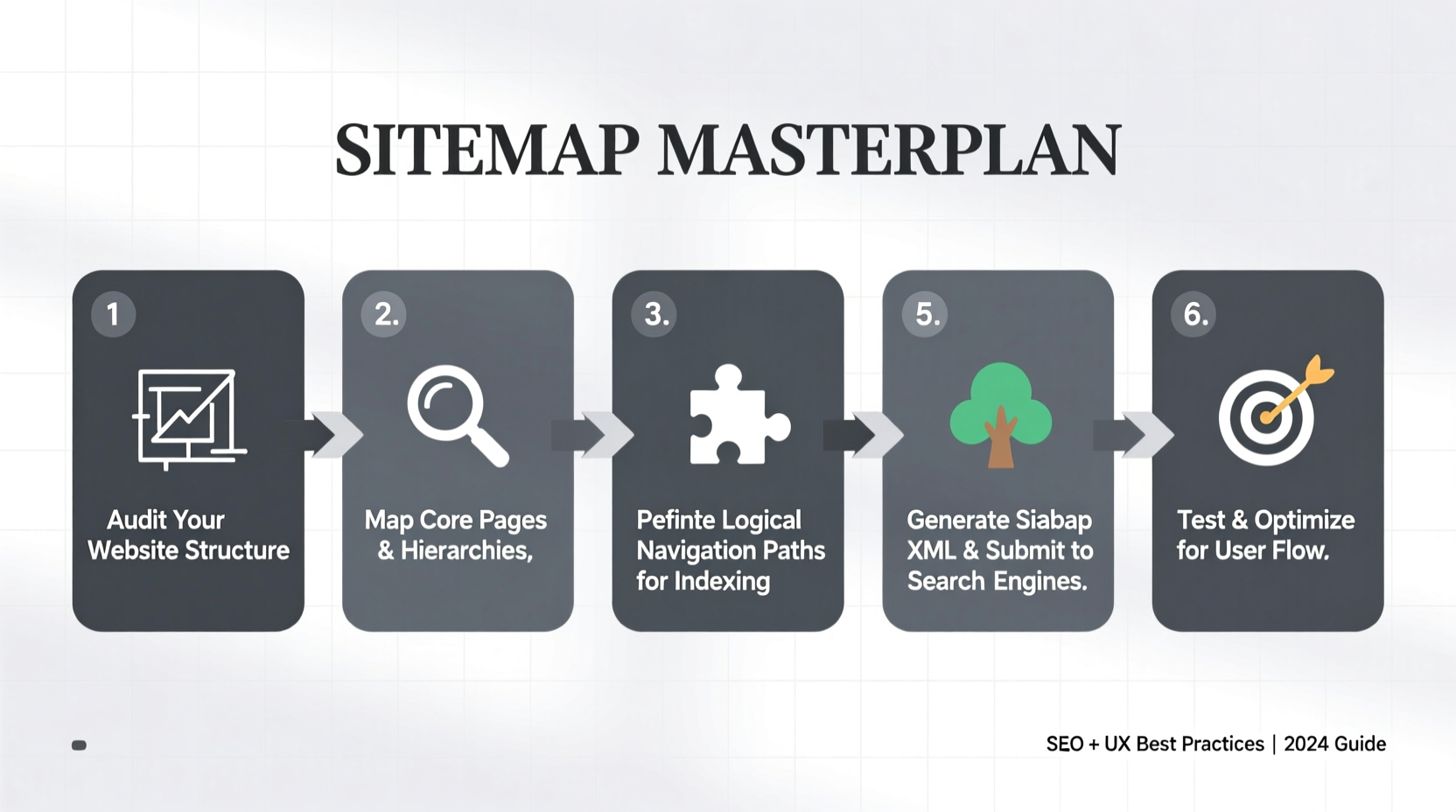A well-structured sitemap is more than a technical checklist item—it’s a strategic tool that bridges search engines and users with your website’s most valuable content. When implemented correctly, it enhances crawl efficiency, supports faster indexing, and improves overall site navigation. Despite its importance, many websites either neglect their sitemap or implement it incorrectly, missing out on critical SEO and usability benefits. This guide walks through the essential steps to build, optimize, and maintain a sitemap that serves both search engines and real people.
Why Sitemaps Matter Beyond SEO

At its core, a sitemap is an XML or HTML file that lists all important pages on your site, along with metadata such as last modified date, update frequency, and priority. While search engines like Google use XML sitemaps to discover and index content more efficiently, HTML sitemaps serve visitors by offering a clear, hierarchical overview of your site’s structure.
The dual purpose of sitemaps—technical discovery and human navigation—makes them indispensable. Large websites with deep content hierarchies benefit significantly from sitemaps, but even small sites can improve visibility and usability by implementing one correctly.
“Sitemaps don’t replace good internal linking, but they act as a safety net to ensure no page falls through the cracks.” — John Mueller, Webmaster Trends Analyst at Google
Step-by-Step Guide to Building an Effective Sitemap
Creating a functional and optimized sitemap involves more than just generating a list of URLs. Follow this structured approach to ensure maximum impact on both SEO and user experience.
- Inventory Your Site Content
Begin by auditing all existing pages. Use tools like Screaming Frog, Ahrefs, or Google Search Console to extract a complete list of indexed and orphaned pages. Categorize them into logical groups: product pages, blog posts, service pages, landing pages, etc. - Select the Right Sitemap Type
Most sites need two types:- XML Sitemap: For search engines. Must be submitted via Google Search Console.
- HTML Sitemap: For users. Should be linked in the footer and designed for readability.
- Prioritize Key Pages
Not all pages are equal. Assign priority levels (0.1 to 1.0) based on business goals. Homepage and cornerstone content should have higher values. Avoid setting every page to 1.0—this dilutes relevance. - Include Essential Metadata
Each URL entry should include:<loc>: Full canonical URL<lastmod>: Date of last update (ISO format)<changefreq>: How often content changes (e.g., weekly, monthly)<priority>: Relative importance (0.1–1.0)
- Generate and Validate the Sitemap
Use tools like Yoast SEO (WordPress), Screaming Frog, or online generators to create the XML file. Validate it using the W3C Feed Validation Service or Google Search Console to catch syntax errors. - Submit to Search Engines
Upload the sitemap to your root directory (e.g.,sitemap.xml) and submit via Google Search Console and Bing Webmaster Tools. Verify submission status and monitor crawl stats regularly. - Create a User-Friendly HTML Version
Design a clean, accessible HTML sitemap organized by category. Include brief descriptions where helpful. Link it in your site footer and ensure it’s mobile-responsive.
Best Practices for Sitemap Optimization
An effective sitemap follows technical standards while aligning with user behavior and content strategy. Below are proven best practices to maximize value.
| Do | Don't |
|---|---|
| Include only canonical, indexable URLs | Include duplicate, redirected, or noindex pages |
| Break large sitemaps into smaller ones (max 50,000 URLs) | Exceed size limits causing parsing errors |
| Use a sitemap index file for multi-section sites | Mix different content types (e.g., images, videos) without separation |
Update lastmod timestamps accurately |
Use placeholder dates or future-dated entries |
| Link the HTML sitemap from the footer | Bury it in obscure locations or exclude it entirely |
Sitemap Index File Example
For large websites, organize sitemaps by content type:
<?xml version=\"1.0\" encoding=\"UTF-8\"?>
<sitemapindex xmlns=\"http://www.sitemaps.org/schemas/sitemap/0.9\">
<sitemap>
<loc>https://example.com/sitemap-pages.xml</loc>
<lastmod>2025-04-01T08:00:00+00:00</lastmod>
</sitemap>
<sitemap>
<loc>https://example.com/sitemap-blog.xml</loc>
<lastmod>2025-04-03T10:30:00+00:00</lastmod>
</sitemap>
</sitemapindex>
Real-World Case: E-Commerce Site Recovery
A mid-sized e-commerce brand noticed declining organic traffic despite consistent content updates. An audit revealed that over 70% of product pages were not included in the sitemap due to dynamic filtering parameters generating thousands of near-duplicate URLs. As a result, Google was missing newly added inventory.
The team restructured their sitemap strategy by:
- Implementing parameter handling in Google Search Console
- Generating a dedicated product sitemap filtered for canonical variants
- Adding automated daily updates via their CMS
Essential Sitemap Checklist
Before publishing or updating your sitemap, verify the following:
- ✅ All URLs return a 200 HTTP status code
- ✅ No broken links or redirects in the sitemap
- ✅ Canonical tags match sitemap URLs
- ✅ XML file is compressed as
sitemap.xml.gzif over 10MB - ✅ Sitemap is referenced in
robots.txt - ✅ Mobile and desktop versions are synchronized
- ✅ HTML sitemap is accessible and keyboard-navigable
- ✅ Submitted and verified in Google Search Console
Frequently Asked Questions
Do I need a sitemap if my site has strong internal linking?
Yes. While robust internal linking helps, a sitemap acts as a failsafe. It ensures search engines can quickly locate pages that may be buried deep or recently added. Google recommends sitemaps even for well-linked sites.
Can a sitemap hurt my SEO?
Only if misused. Including low-quality, thin, or duplicate content can dilute crawl budget and confuse search engines. Always curate your sitemap—quality matters more than quantity.
How often should I update my sitemap?
Automate updates. Any time new content is published or existing content is significantly revised, the sitemap should reflect those changes immediately. For dynamic sites, real-time generation via API or plugin is ideal.
Conclusion: Turn Structure Into Advantage
A thoughtfully built sitemap does more than satisfy search engine bots—it reflects intentionality in how your content is organized and accessed. By investing time in proper sitemap creation, you enhance both technical performance and user journey. Whether you run a blog, e-commerce store, or corporate site, a clear, updated sitemap strengthens your digital foundation.









 浙公网安备
33010002000092号
浙公网安备
33010002000092号 浙B2-20120091-4
浙B2-20120091-4
Comments
No comments yet. Why don't you start the discussion?